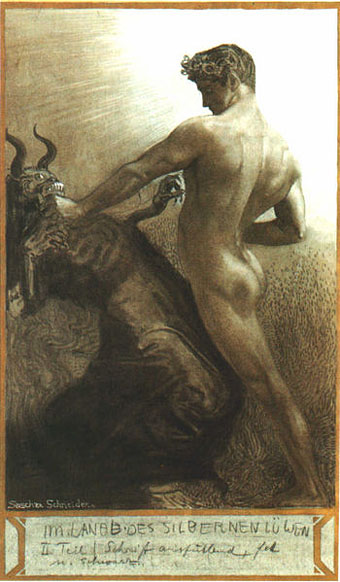
I first came across Sascha Schneider’s art some years ago when reading about German writer Karl May (1842–1912), and it was as May’s illustrator that Schneider initially gained recognition. May was one of Germany’s most popular novelists, his Western adventures about Old Shatterhand and Winnetou the Warrior sold millions of copies and numbered Albert Einstein and Adolf Hitler among their enthusiasts. Schneider’s work struck me as unusual compared to other illustrators of the period; there was a curious quality which seemed to owe more to Symbolist painting than book illustration and the few examples I saw were distinctly homoerotic at a time when homosexuality was regarded with suspicion or downright hostility. Sure enough it turns out that Schneider was openly gay and that May had no problem with this. It also transpires that the Symbolist tone which seemed so unsuited to a writer of Western pulp fiction complemented the content of some of May’s later works which weren’t Westerns at all but were Orientalist fantasies with a metaphysical inclination. The publisher wasn’t too happy with the ambivalent nature of these pictures, however, and they were replaced in later editions.
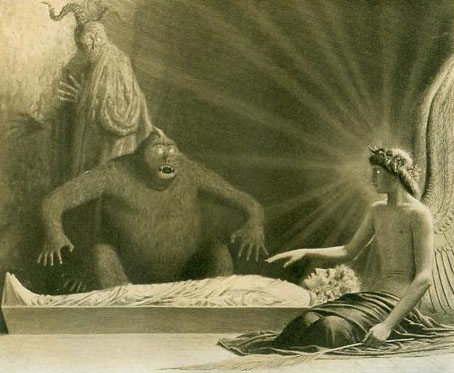
For once I don’t have to complain about a lack of website examples, Schneider’s connections with May have at least ensured his work is still being written about even if it seems overlooked by gay art histories. This latter circumstance is unusual since he was a contributor to Der Eigene, the world’s first gay periodical, founded by Adolf Brand in 1896.
I’ve taken the liberty of posting more samples than usual here and you’ll have to forgive the lack of information about titles and dates. Many of the pictures are quite bizarre for the way they’re continually juxtaposing naked figures with angels, demons or monsters. Even the Winnetou illustrations, which should be depicting Native Americans, look more suited to the wall of a salon in fin de siècle Paris than stories of the Wild West. Links to various galleries follow.
• Schneider’s Karl May frontispieces
• An extensive Russian gallery
• A smaller Schneider gallery
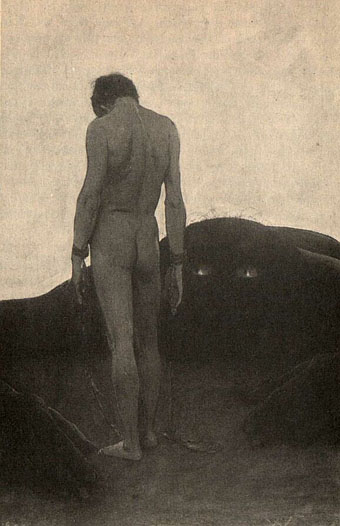
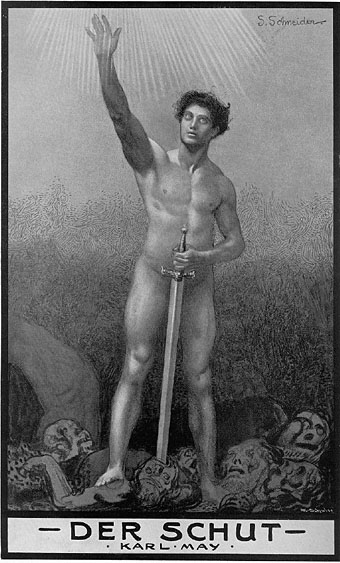
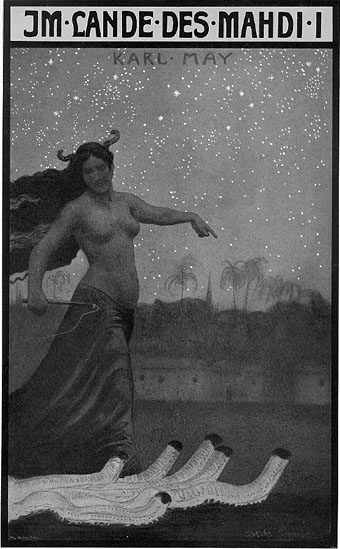
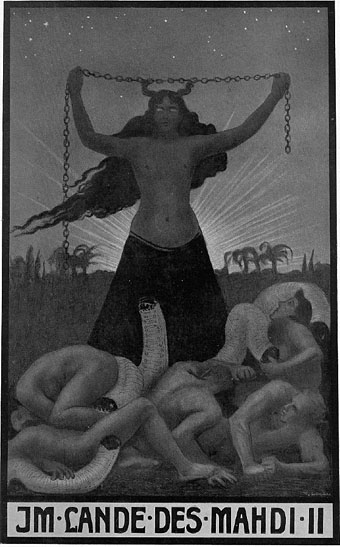
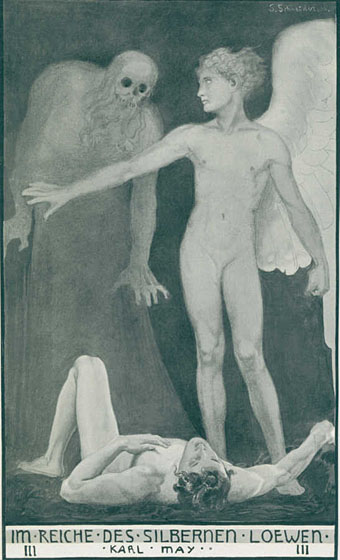
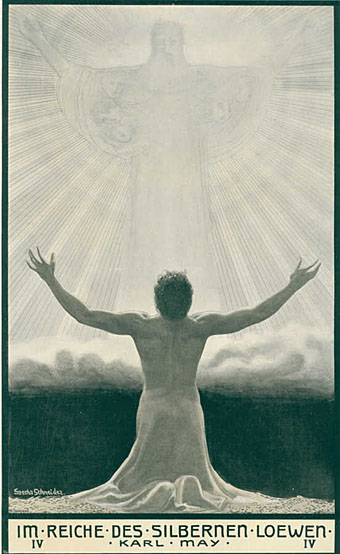
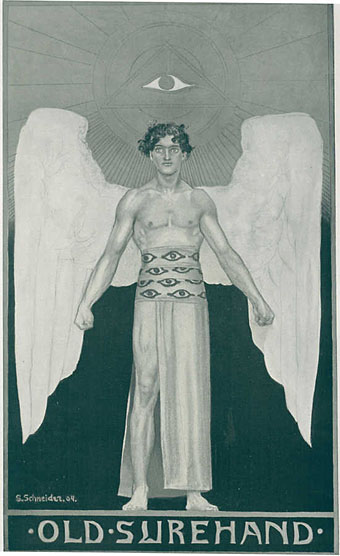
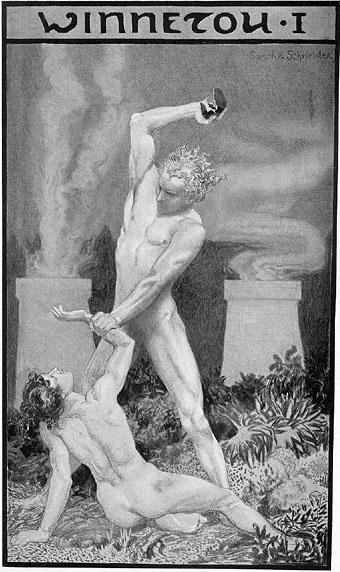
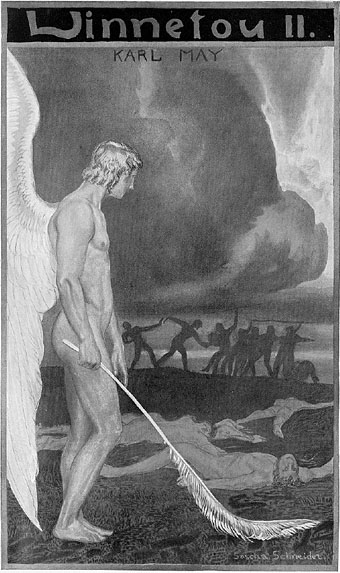
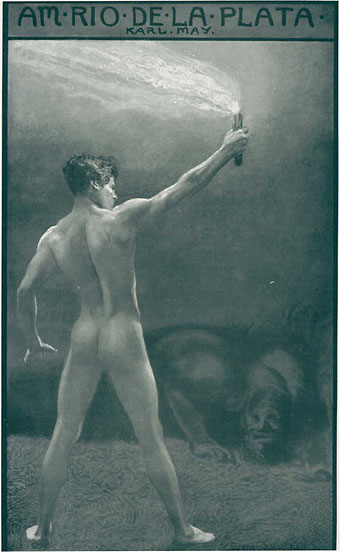
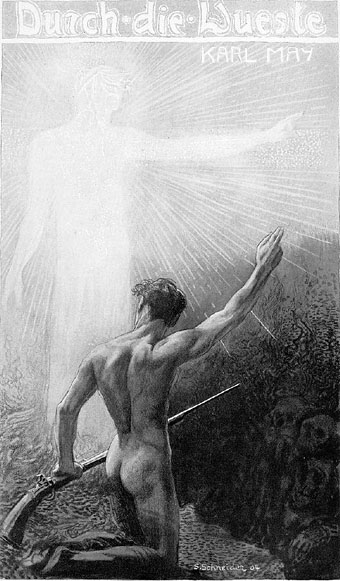
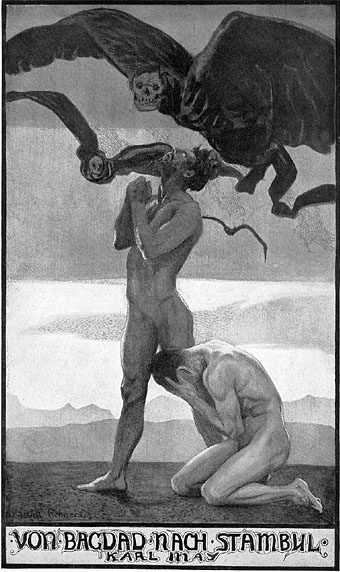
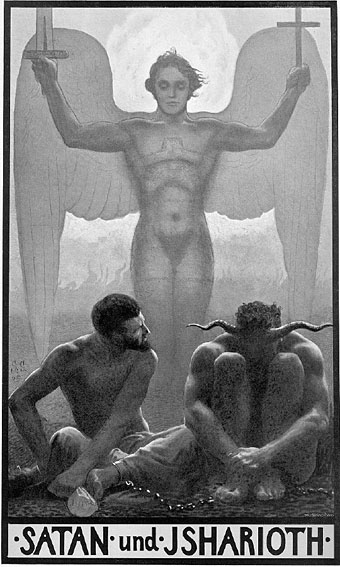
Elsewhere on { feuilleton }
• The gay artists archive
• The illustrators archive

How wonderful. Thanks so much for posting!
Hiya, This is beautiful stuff. Having looked through your external links for his stuff, I realise that there are one or two of his images which are familiar so it’s wonderful to be introduced to more.
I particularly like the sutblety of some of his work in colour.
CJ
Alexander (Sascha) Schneider is listed in a wonderful book: “Kingdom of the Soul” symbolist Art in Germany 1870-1920. He is considered to be apart of the Dresden circle that formed around Max Klinger. Before Schneider became involved with illustrating Karl May he had a successful career as a painter. He favored large sale works, several including his masterpiece “For Truth (19020 are illustrated in the book. This work was 12 meters long by 4 meters high. The Dresden/Klinger group also included Richard Muller, Otto Greiner and Hans Unger.
Since these artists do not easily fit into any stylistic category their work has been in the sphere of the specialist. Max Klinger had an enormous influence and most of the themes that these artists developed in their drawing, printmaking and painting originated with him. Klinger was also responsible for adding a psychological element to there work. An example of his thinking can be seen in his haunting print cycle. “A Glove.” However, Schneider, Muller and Greiner greatly surpassed Klinger in technical abilities. All were brilliant draughtsman and colorists. This work deserves to have a much broader audience.
Thanks Richard, good knowing that about Schneider and Max Klinger whose work I’ve admired for years (Dover do a great book of his etchings). I’d have made a post about A Glove before now if it wasn’t so well known.
i purchased a painting of judas being judged by jesus with angles and the devil in the backround. it was painted by e. baumann from a drawing by s. schneider. it is dated l909 and measures 4ft by 3ft. I would like to know more about schneider and where this particular work is exhibited. I found several postcards for sale on ebay but cannot fine the site again. also would like to see more of his work. I appreciate the bookplates you had in your article and would like to know where I could get copies. thank you dave
forgot to ask for e-mail reply